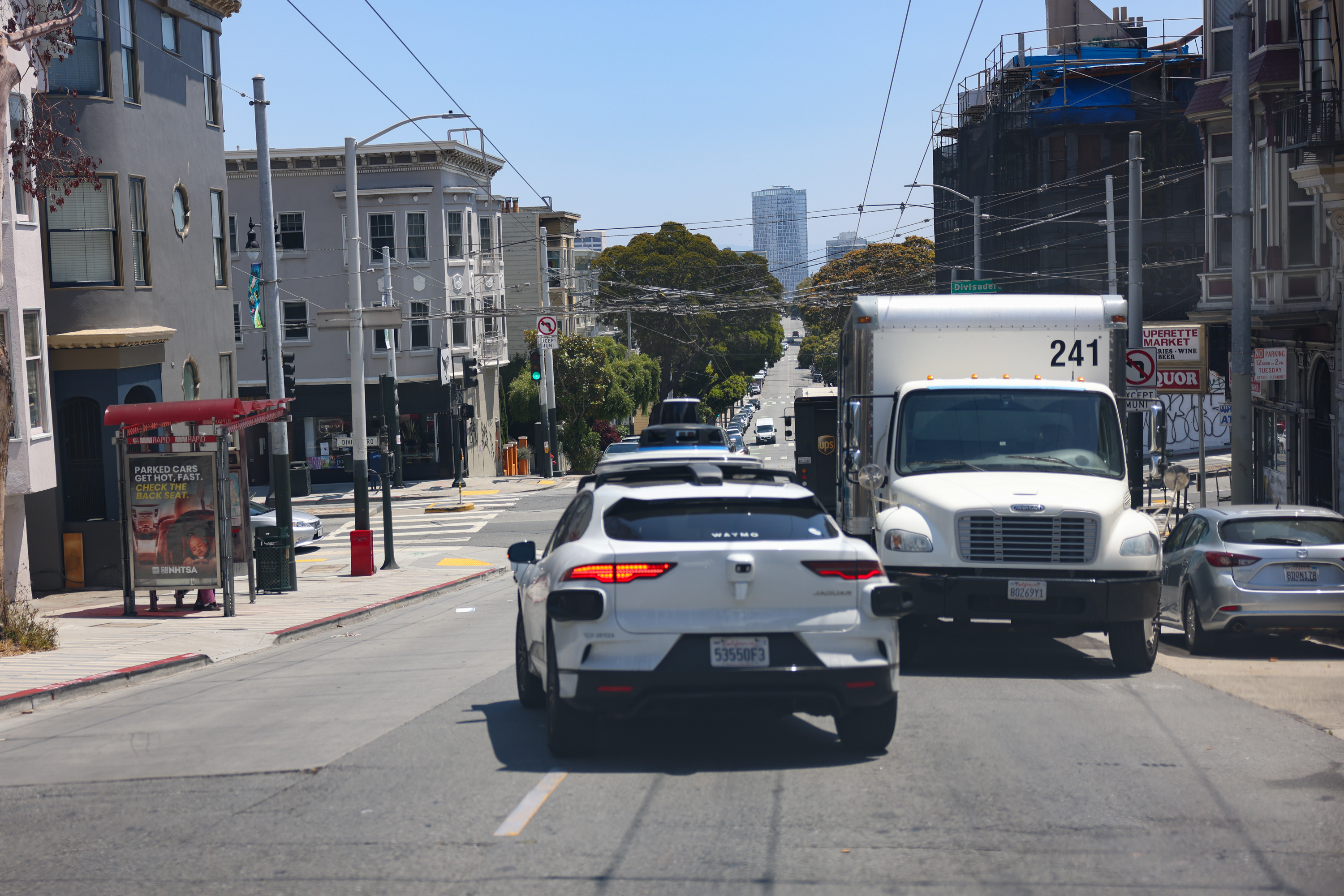If a driving-school teacher were grading a robotaxi, they would probably pass it with flying colors. In many ordinary circumstances, these autonomous vehicles follow the rules of the road perfectly: They don’t speed. They’re deferential to other drivers. They give the right-of-way patiently. They navigate bottlenecks calmly.
But some authorities, including San Francisco Fire Department and transportation officials, say the driverless cars now being tested in the city by companies such as Cruise and Waymo often perform poorly when confronted with unpredictable or unusual situations. Autonomous vehicles have driven into downed power lines, stopped in the middle of busy intersections and wandered into emergency fire scenes.
Waymo and Cruise are now seeking permission from the California Public Utilities Commission to operate the vehicles without drivers 24/7 in the city. A hearing is set for Aug. 10.
Fire Chief Jeanine Nicholson, unhappy with the robotaxis’ interactions with emergency personnel, has said the vehicles are “not ready for prime time.”
But demand is high. Waymo, the autonomous vehicle subsidiary of Alphabet Inc., currently operates around 200 autonomous vehicles in San Francisco. For now, the company only offers rides for those with an access code; the waitlist to get one has grown to over 80,000, Bloomberg reported.
The Standard was curious to see how these autonomous vehicles navigate tricky situations. Although simulating an emergency situation like a downed power line or a structure fire was not possible, I took Waymo on a journey through some of the city’s most chaotic, difficult intersections to see how it would perform.
Here’s where we went and how the Waymo did.
A Five-Way Intersection in West Portal
I started at a busy intersection in West Portal. Junipero Serra Boulevard, Sloat Boulevard, St. Francis Boulevard, West Portal Avenue and Portola Drive all meet at this spot, which also includes an above-ground Muni stop. Instead of picking me up directly at the intersection, the Waymo app directed me to a location on a nearby side street that it deemed safe. The car pulled over near the curb, and once I was near enough, the app allowed me to unlock the vehicle and get in.
Sliding into the car’s clean leather seats—all Waymos are fully electric Jaguar I-PACEs—I was greeted with a bubbly “Welcome” screen and the kind of meditative music that you would expect at a high-end spa or Nintendo’s Wii Fit home screen.
Once the ride started, the Waymo had no difficulty navigating the intersection; it knew exactly which lane it was turning into. I could follow its exact path on the screen built into the console.
Navigating Laguna Honda Hospital
I then headed towards Laguna Honda Hospital in Twin Peaks to see how the vehicle would navigate around a complex, campus-like area. This is where I encountered the most visible example of difficulty: a roundabout with five exits—Taraval Street, 10th Avenue, Dewey Boulevard, Kensington Way and Claremont Boulevard—plus bike lanes. The vehicle sputtered as other cars drove nearby on the traffic circle, and it went around the loop two extra times to ensure its desired exit was open. At one point, it came to a complete stop because it detected an object to its left, which may have just been the decorative plant structure in the rotary’s center.
The Waymo fared surprisingly well on small residential streets near the hospital. On narrow roads with passing room for only one vehicle, it anticipated an incoming car from up to one block away and waited for it to pass. It even heeded a detour sign set up by a construction site. It also safely navigated the various parking lots and side streets at the hospital.
Getting Honked At in the Presidio
Next up was taking Crossover Drive through Golden Gate Park and then heading up to the Presidio along Lincoln Boulevard. While erring on the side of safety allowed the Waymo to get through many complicated interactions involving pedestrians and other drivers, it also irritated other drivers. Several people honked at us for driving well below the speed limit on Lincoln Boulevard.
The Edge of Waymo’s Map
I finished up my trip going to the Polk Street and Broadway intersection, which bumped against the edge of Waymo’s operations. That means I was not able to take the Waymo down San Francisco’s famously curved Lombard Street or see how it would interact with a cable car. The company is rolling out the cars in a phased expansion that currently restricts operations in northeast neighborhoods like the Tenderloin, the Marina District, and Nob Hill for most public riders; however, over 1000 public riders already have access to 24/7 rides throughout entire city, according to a Waymo spokesperson. A hearing scheduled for Aug. 10 will potentially give the green light for Waymo to charge for rides, paving the way for all customers to access the cars throughout the city.
Despite the relatively smooth driving, robotaxis are the subject of quite a bit of road ridicule. Many bystanders and drivers are confused. Some will stare in open disdain. Some give the middle finger. Some take photos. Anti-autonomous vehicle activists in San Francisco have even placed cones on hoods to disable them.
Sometimes it’s nice to make eye contact and wave at a driver, even if the car does not need one.
Correction: A previous version of this article stated that the Aug. 10 hearing would potentially allow Waymo to operate 24/7 throughout the whole city. Waymo is already permitted to operate throughout the whole city 24/7; the hearing is instead related to commercialization efforts that will allow the company to charge for rides.
